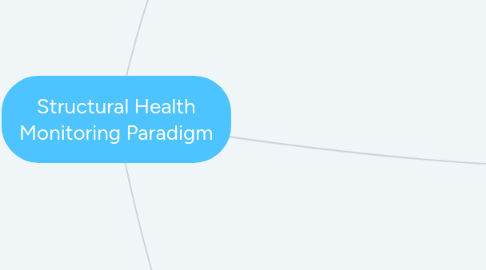Structural Health Monitoring Paradigm
by Murad Al Qurishee


1. Data Acquisition and Cleansing. A. Define data to be acquired B. Define data included or excluded from the feature selection process
1.1. Types and amount of data to be acquired?Location of sensors? Define data acquisition, storage, and transmittal system.
1.2. Data Normalization Procedures
1.2.1. A. Level of input B. Temporal
1.3. Feedback from model development
1.4. How often should data be acquired?
1.4.1. A. Only after extreme events B. Periodic intervals C. Continuous
1.5. Sources of Variability
1.5.1. A. Changing environmental/testing/data reduction conditions B. Unit-to-unit
1.6. Feedback from feature selection
2. Feature Selection A. What features of the data are best for damage detection B. Statistical distribution of features C. Data condensation
2.1. Basis for feature selection
2.1.1. A. Numerical analysis B. Past experience C. Component testing
2.2. Feedback from model development
2.3. Sources of variability
2.4. Physical models for feature
2.4.1. A. Linear vs. nonlinear B. Purely experimental or analytical/experimental
3. Statistical Model Development A. Data available from undamaged system B. Data available only from undamaged system
3.1. Is the structure damaged or undamaged?
3.1.1. Group classification. Identification of Outliers.
3.2. What is the extent of damage?
3.2.1. Group classification Group classification Regression analysis
3.3. Remaining useful life of the system
3.4. Where is the damage located?
3.4.1. Group Classification. Regression analysis
3.5. What type of damage is it?
3.5.1. Group Classification. Regression analysis
3.6. Incorrect diagnosis of damage
3.6.1. False-negative results False-positive results

